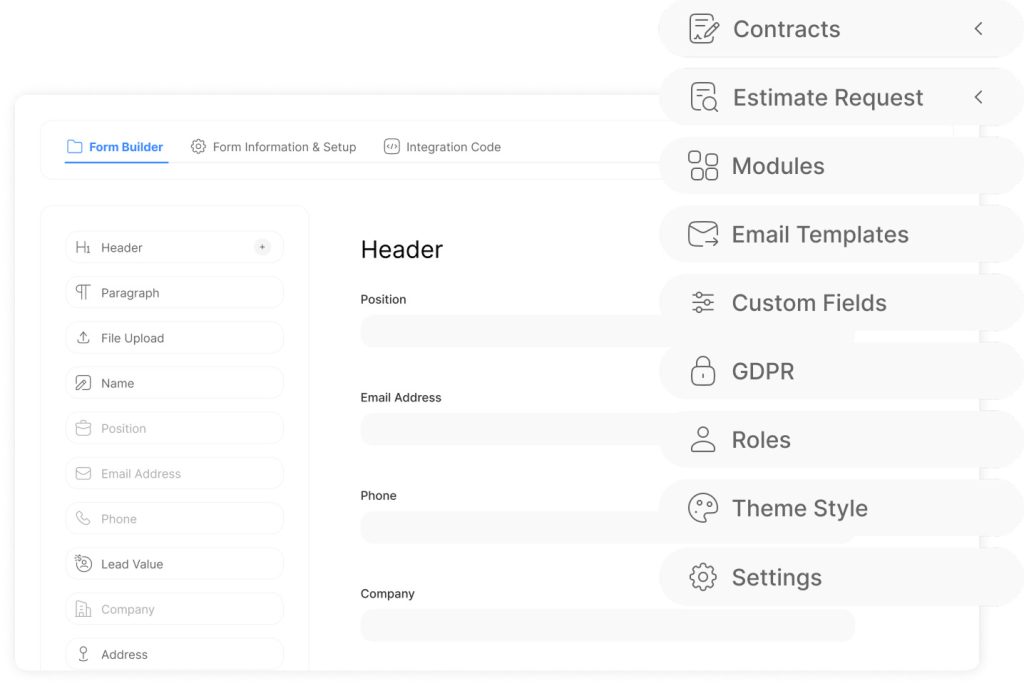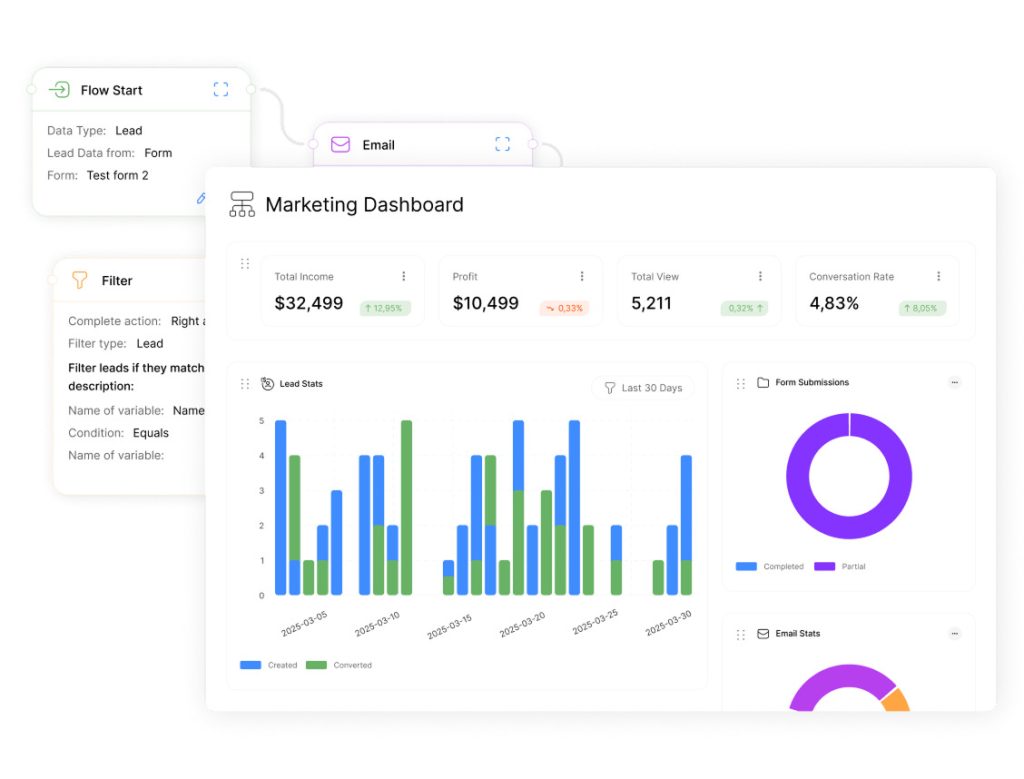Proven One-Click Strategies to Convert Dead Leads into Loyal Customers

Turning website visitors into loyal customers requires more than luck. Businesses need strategic design, frictionless navigation, and content that drives action. Research shows that optimizing these elements can transform passive clicks into measurable sales. Incorporating onceclick conversion strategies can significantly streamline the purchasing process, reducing the barriers that often deter potential buyers. By focusing on user experience and simplifying checkout procedures, businesses can lead visitors through their sales funnel with greater efficiency. As a result, companies not only enhance customer satisfaction but also boost their overall revenue potential.
A high-performing landing page combines visual appeal with clear messaging. Simplified layouts guide users toward conversion points, while trust signals like secure payment badges reduce hesitation. Fast load times and mobile responsiveness further prevent visitor drop-offs.
Persuasive calls-to-action (CTAs) act as the final push. Phrases like “Start Your Free Trial” or “Get Instant Access” create urgency. Pairing these with one-click checkout options removes barriers, making purchases effortless. Platforms that centralize customer interactions ensure consistency across every touchpoint.
Key Takeaways
- Strategic design improves user experience and boosts conversion rates.
- Trust-building elements like SSL certificates increase purchase confidence.
- Mobile-responsive layouts retain 60% more visitors on average.
- Clear CTAs aligned with audience needs drive immediate action.
- Integrated tools for customer management streamline post-conversion engagement.
Understanding the Click-to-Customer Journey
The transition from casual browser to committed buyer isn’t accidental—it’s engineered. Businesses that map this journey see 34% higher conversion rates than those guessing at customer behavior. Mapping every interaction reveals where opportunities get lost and how to fix them.
Mapping the Customer Funnel
Modern journeys unfold across four stages: awareness, consideration, decision, and retention. At each phase, website visitors seek specific information. For example, social media ads often spark initial interest, while detailed product pages address later-stage questions.
| Stage | Goal | Key Touchpoints |
|---|---|---|
| Awareness | Educate | Social media posts, blog content |
| Consideration | Engage | Email newsletters, website demos |
| Decision | Persuade | Pricing pages, customer reviews |
Identifying Key Touchpoints
Social media drives 47% of initial traffic, but website performance determines if visitors stay. Tools like heatmaps show where users click, scroll, or abandon pages. Pairing this data with CRM insights creates a blueprint for frictionless journeys.
Tracking tools like Google Analytics highlight patterns. For instance, customers who watch product videos convert 22% faster. Aligning content with these behaviors turns passive observers into active participants.
Crafting a High-Converting Landing Page

A landing page’s success hinges on its ability to mirror user intent instantly. When visitors arrive, they expect seamless alignment between ads they clicked and the page’s content. Mismatched messaging or slow load times erode trust—53% of users abandon pages that take over three seconds to load.
Design Essentials and Usability
Clarity trumps complexity. Clean layouts with bold headlines and contrasting CTA buttons reduce cognitive strain. Prioritize mobile responsiveness—Google reports 61% of users unlikely to return after poor mobile experiences. Key principles include:
- Compressed images and lazy loading for faster speeds
- White space to highlight core offers
- Breadcrumb navigation for multi-step processes
| Best Practice | Common Pitfall |
|---|---|
| Single-column layout | Overcrowded sections |
| Above-the-fold CTA | Buried action buttons |
| SSL certification badges | Missing trust signals |
Ensuring Relevance to Your Ads
Consistency drives marketing success. If an ad promises “50% Off Summer Styles,” the landing page must display that offer immediately. Use identical visuals, fonts, and keywords to reinforce familiarity. Tools like Unbounce show pages aligned with ad copy achieve 25% higher conversion rates.
Dynamic content adapts to visitor demographics or past behavior. For example, returning users might see personalized product recommendations. This approach reduces bounce rates by addressing specific needs upfront.
Optimizing Website Performance and Mobile Experience
A fast, mobile-friendly website isn’t just convenient—it’s a business necessity. With 53% of mobile users abandoning sites taking over three seconds to load, performance directly impacts revenue. Technical optimizations paired with adaptive design create frictionless experiences that keep visitors engaged.
Enhancing Load Speeds and Responsiveness
Compressing images reduces file sizes by up to 80% without sacrificing quality. Implementing browser caching cuts server requests, while content delivery networks (CDNs) accelerate global page delivery. Tools like Google PageSpeed Insights identify bottlenecks like render-blocking JavaScript.
| Optimization | Result | Tools |
|---|---|---|
| Lazy Loading | 35% faster load times | WordPress plugins |
| Code Minification | Reduced CSS/JS by 40% | Webpack, Gulp |
| HTTP/3 Protocol | 20% lower latency | Cloudflare |
Designing for a Mobile-First World
Mobile users expect thumb-friendly navigation and crisp product visuals. Responsive grids adjust layouts across screen sizes, while touch targets larger than 48px prevent misclicks. Sites prioritizing mobile-first principles see 24% longer session durations.
High-quality media galleries showcase brand offerings effectively. Videos under 5MB with autoplay controls perform best. Platforms like Shopify report 18% higher conversions when product pages use device-specific previews.
Powerful CTAs and Trust-Building Elements

Conversion success hinges on two critical elements: irresistible calls-to-action and visible trust signals. Research shows pages combining these components achieve 42% higher engagement rates. Strategic placement and design turn casual interest into measurable action.
Designing Compelling Call-to-Action Buttons
Effective CTAs use color contrast and action-oriented verbs. Buttons like “Claim Your Discount” or “Download Now” perform 31% better than generic alternatives. Positioning matters—placing CTAs near pricing details or benefit summaries aligns with natural decision points.
Media elements like arrows or animated icons guide attention. Video demonstrations beside CTAs increase click-through rates by 19%. Brands like Nike use dynamic CTAs that change based on user behavior, such as showing “Shop Running Shoes” to visitors who viewed athletic content.
Utilizing Secure Payment and Social Proof
Trust badges increase checkout completion by 28%. Displaying SSL certificates and payment logos like PayPal reassures users. Customer testimonials with photos and job titles boost credibility more effectively than anonymous reviews.
| Trust Element | Impact | Example |
|---|---|---|
| Live Purchase Notifications | 18% conversion lift | Amazon’s “Bought recently” pop-ups |
| Money-Back Guarantees | 23% risk reduction | Nordstrom’s 365-day return policy |
Social media integrations showcase real-time engagement. Displaying Instagram feeds with user-generated content creates authentic connections. Shopify stores using this media strategy report 14% higher average order values.
Techniques to Revive Lost Sales and Convert Inactive Users
Abandoned carts and inactive users represent untapped revenue streams. Businesses that implement targeted recovery strategies regain 15-20% of lost sales on average. Tailored incentives and clear value propositions turn hesitation into action.
Smart Incentives Drive Re-engagement
Time-sensitive discounts reactivate 28% of dormant users. Limited offers like “24-hour flash sales” create urgency. Personalized promo codes sent via email achieve 32% higher redemption rates than generic campaigns.
“Customers who receive abandoned cart reminders with discounts convert 3x faster than those without incentives.”
| Tactic | Audience Segment | Conversion Lift |
|---|---|---|
| Exclusive member pricing | Repeat visitors | 19% |
| Free shipping thresholds | First-time buyers | 27% |
| Bundle discounts | Price-sensitive users | 34% |
Clarifying What Makes Your Offer Irresistible
Product pages highlighting unique benefits outperform generic descriptions by 41%. Showcase specific differentiators like patented technology or eco-friendly materials. Customer reviews detailing real-world use cases provide social proof that generic claims can’t match.
Detailed sizing charts reduce returns by 22% in apparel sectors. Interactive comparison tools help users evaluate options confidently. Brands like Allbirds use sustainability calculators to reinforce their USP during checkout.
Recovery emails that restate core values see 18% higher click-through rates. Pair these messages with audience-specific incentives for maximum impact. Platforms integrating these tactics across marketing pages report 29% faster sales recovery cycles.
Leveraging Online Marketing and Retargeting Strategies

Modern businesses thrive by reconnecting with interested users through precise marketing tactics. Personalized campaigns and automated follow-ups bridge gaps between initial interest and final decisions. Companies using these methods see 34% higher conversion rates compared to generic outreach.
Personalization and Behavioral Targeting
Tailored content drives engagement. Behavioral data reveals what users want—like suggesting running shoes to someone browsing fitness blogs. Services like Netflix use viewing history to recommend shows, increasing watch time by 28%.
Key benefits include:
- Higher click-through rates from segmented email lists
- Dynamic ads showcasing previously viewed products
- Location-based offers for local clients
Email Reminders and Social Media Remarketing
Automated emails recover 15% of abandoned carts. Time-sensitive phrases like “Your cart expires soon” create urgency. Platforms like Klaviyo enable triggers based on user actions, such as sending discounts after failed checkouts.
| Tactic | Audience | Result |
|---|---|---|
| Retargeting ads | Website visitors | 22% conversion lift |
| Personalized newsletters | Subscribers | 19% open rate increase |
Social media platforms amplify reach. A travel agency regained 24% of lost clients using Facebook ads showcasing unfinished bookings. Combining email and social strategies ensures multiple touchpoints without overwhelming users.
Analytics tools like Google Ads refine campaigns. Testing headlines, visuals, and CTAs identifies what resonates. Services prioritizing data-driven adjustments achieve 31% faster client acquisition cycles.
Using A/B Testing and Data Analysis for Conversion Optimization
Data-driven decisions separate thriving businesses from stagnant ones. A/B testing removes guesswork by revealing what truly resonates with audiences. By comparing two versions of a page, teams identify changes that boost engagement and sales.
Establishing Key Metrics for Success
Start by defining measurable goals. Track purchase frequency, cart abandonment rates, and shipping page completion. These metrics highlight friction points—like unclear product details or unexpected costs—that deter conversions.
Google Optimize users often see 12-15% improvements in checkout flows after analyzing these patterns. Monitoring how shipping timelines impact drop-offs helps refine delivery propositions. For example, free two-day shipping increases conversions by 22% versus standard options.
Implementing A/B Split Testing
Split traffic evenly between page variations to test elements like headlines or button colors. Tools like Optimizely make this simple. One eCommerce brand increased add-to-cart rates by 19% by testing product image layouts.
| Test Element | Impact |
|---|---|
| Simplified checkout form | 14% fewer abandonments |
| Campaign-specific CTAs | 27% higher click-through |
Continuous testing sharpens campaigns over time. Adjust email subject lines based on open rates or refine landing pages using heatmap data. Brands iterating on test results achieve 31% faster growth in repeat purchases.
Incorporating Social Proof, Customer Reviews, and Brand Awareness
Trust drives decisions—89% of consumers check reviews before purchasing. Businesses that strategically display social proof see 68% higher conversion rates compared to those relying solely on product descriptions. Authentic validation bridges the gap between interest and action.
Showcasing Testimonials and Trust Badges
Customer quotes with names and photos perform 42% better than anonymous reviews. Video testimonials increase credibility by showcasing real-world use cases. Trust badges like Norton Secured or BBB Accreditation reduce cart abandonment by 19%.
“Sites displaying verified reviews experience 3.2x more returning visitors than competitors without social proof.”
Place trust elements near pricing or checkout areas. A SaaS company increased trial sign-ups by 27% after adding security badges to their payment page. Monitor conversion rate changes weekly to refine placements.
Boosting Brand Visibility Through Multiple Touchpoints
Consistent messaging across platforms reinforces recognition. Users encountering a brand 5-7 times are 70% more likely to purchase. Tactics include:
- Retargeting ads featuring customer testimonials
- Email signatures with review highlights
- Social media posts sharing user-generated content
| Channel | Trust-Building Tactic | Impact |
|---|---|---|
| Website | Live review feeds | 22% conversion lift |
| Case study links | 18% click-through boost |
Brands using three or more touchpoints report 34% faster turning clicks into customers. Track engagement over time to identify underperforming channels. Platforms integrating these strategies achieve 29% higher repeat purchase rates.
Conclusion
Transforming casual clicks into committed buyers demands precision across every interaction. Effective strategies merge high-performing landing pages, retargeting precision, and frictionless user journeys. Businesses that align design innovation with technical rigor see measurable gains in turning site visitors into loyal clients.
Key methods include optimizing landing pages for intent-matching content and streamlining checkout processes. Social networks amplify reach through tailored ads, while A/B testing refines messaging for maximum impact. Continuous data analysis ensures marketing campaigns adapt to shifting consumer behaviors.
A holistic approach bridges creativity and functionality. Mobile-responsive layouts, trust-building elements, and personalized incentives work synergistically. Platforms integrating these tactics report 31% faster conversion cycles compared to siloed efforts.
Business leaders must prioritize iterative improvements. Regular performance audits and customer feedback loops uncover hidden opportunities. Brands embracing this mindset maintain competitive edges in crowded markets. By leveraging data from these audits and feedback, businesses can tailor their offerings to better meet customer needs and enhance satisfaction. Additionally, investing in top rated customer support solutions ensures that clients feel valued and heard, further solidifying brand loyalty. As a result, organizations that adapt and refine their strategies are better positioned to thrive amid evolving market dynamics.
Ready to elevate results? Implement these proven techniques to convert clicks efficiently. Start by auditing your landing pages and social media tactics—then build on what works using data-backed insights.

